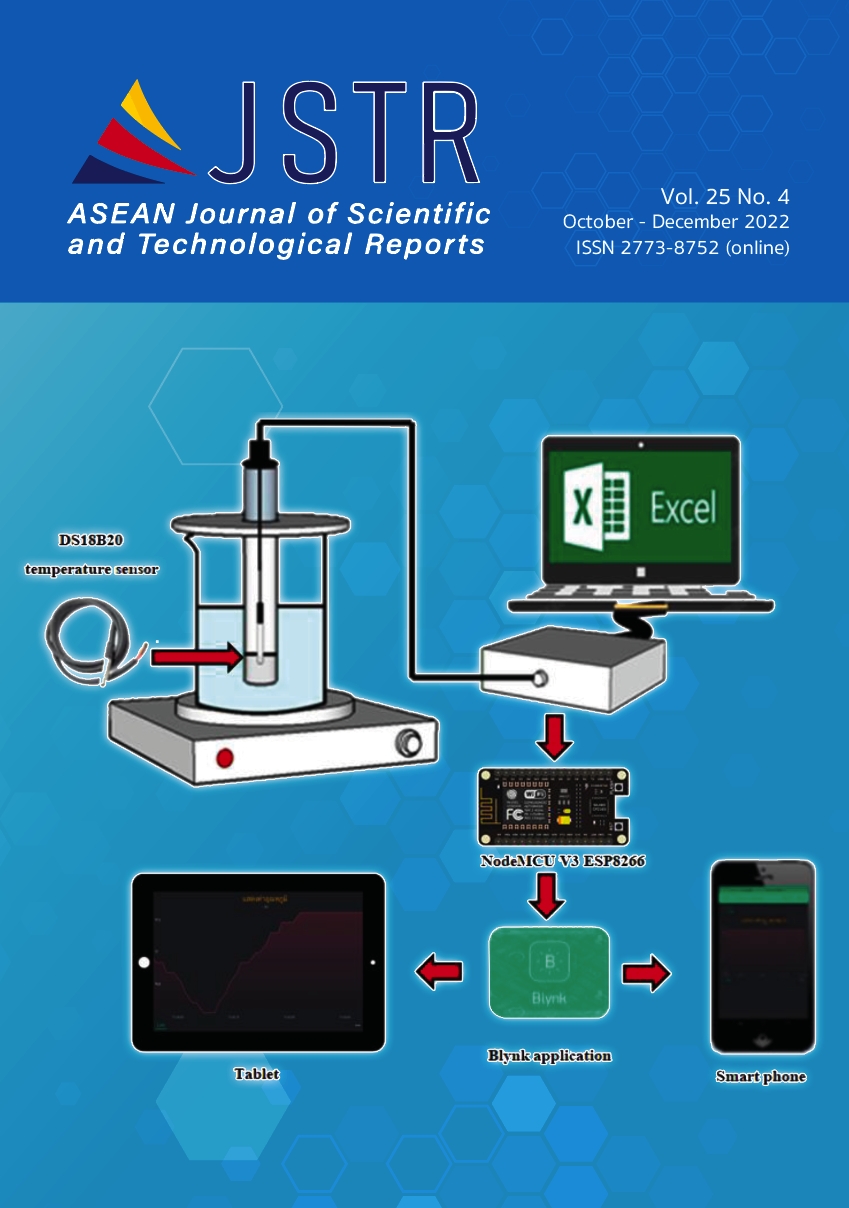Plasma Instability During ITBs Formation with Pellet Injection in Tokamak
Main Article Content
Abstract
JET H-mode plasma discharge 53212 simulation during the pellet fueling operation in the presence of an internal transport barrier is carried out using the 1.5D BALDUR integrated predictive modelling code. The plasma instability during ITB formation with pellet injection in a tokamak is investigated. These simulations use a neoclassical transport model and an anomalous transport model (either multimode or mixed Bohm/gyro-Bohm core transport model). The boundary condition is described at the top of the pedestal, which is calculated theoretically based on a combination of magnetic and flow shear stabilization pedestal width scaling and an infinite-n ballooning pressure gradient model. The toroidal flow calculation is based on the neoclassical viscosity toroidal velocity model. It was found that the shallower pellet does not destroy the ITB, which locating mainly between r/a = 0.8 and 0.9. Moreover, in the plasma center region (0.4<r/a<0.6) the effective electron thermal diffusivities do not change during the ablation time. However, the effective electron thermal diffusivities decrease after pellet ablation, which means a shallower pellet can improve the internal transport barrier.
Article Details

This work is licensed under a Creative Commons Attribution-NonCommercial-NoDerivatives 4.0 International License.
References
Manfredi, G.; Dendy, R.O. Transport properties of energetic particles in a turbulent electrostatic field. Phys. Plasmas, 1997, 4, 628.
Parks, P. B.; Turnbull, R.J. Effect of transonic flow in the ablation cloud on the lifetime of a solid hydrogen pellet in a plasma. Phys. Fluids, 1978, 21, 1735.
Singer, C.E. et al. .Baldur: A one-dimensional plasma transport code. Comput. Phys. Commun. 1988, 49 275
Connor, J. W. et al. Stability of the trapped electron mode in steep density and temperature gradients Plasma Phys. Controlled Fusion ,2006, 48, 885.
Weiland, J. Collective modes in inhomogeneous plasma: kinetic and advanced fluid theory. Bristol: Institute of Physics Publishing, 2000.
Bateman, G. et al. Predicting temperature and density profiles in tokamaks. Physics of Plasmas, 1998, 5, 1793.
Akers, R. J. et al Transport and confinement in the Mega Ampère Spherical Tokamak (MAST) plasma. Plasma Phys. Control. Fusion, 2003, 45, A175.
Garzotti, L. et al. Microstability analysis of pellet fuelled discharges in MAST Plasma Phys. Control. Fusion.2014, 56, 035004.
Guzdar, P. N. et al. Shear flow generation by drift waves revisited. Physics of Fluids B,1993, 5, 3712.
M Erba et al. Development of a non-local model for tokamak heat transport in L-mode, H-mode and transient regimes, Plasma Phys. Control. Fusion, 1997, 39 261.
Onjun, T. et al. Comparison of low confinement mode transport simulations using the mixed Bohm/gyro-Bohm and the Multi-Mode-95 transport model. Physics of Plasmas, 2001, 8, 975.
Houlberg, W. A. et al. Bootstrap current and neoclassical transport in tokamaks of arbitrary collisionality and aspect ratio. Phys. Plasma , 1997 ,4, 3230.
Hirshman, S. P. et al. Neoclassical transport of impurities in tokamak plasmas. Nucl. Fusion, 1981, 21, 1079
Köchl, F. et al. Pellet Drift Modelling – Validation and ITER Predictions, in Proc. 35th EPS Conf. Plasma Phys. 32D P-4.099, 9–13 June 2008, Hersonissos, Greece.
Pégourié, B. et al. Homogenization of the pellet ablated material in tokamaks taking into account the ∇B-induced drif. Nucl. Fusion, 2007, 47, 44.
Parks, P. B. et al. Effect of Parallel Flows and Toroidicity on Cross-Field Transport of Pellet Ablation Matter in Tokamak. Plasmas,Physical Rev Letters, 2005, 94, 125002.
Hannum, D. et al. Comparison of high-mode predictive simulations using Mixed Bohm/gyro-Bohm and Multi-Mode (MMM95) transport models. Physics of Plasmas,2001, 8, 965.
Bateman, G. et al. Integrated predictive modeling of high-mode tokamak plasmas using a combination of core and pedestal models. Physics of Plasmas, 2003 ,10, 4358.
Snyder, S. et al. Effect of isotope mass on simulations of the high-mode pedestal and edge localized modes. Physics of Plasmas 2005,12 112508
Poolyarat, N. et al. Simulation study of HL-2A-like plasma using integrated predictive modeling code. Plasma Physics Reports ,2009,35,987.
Chatthong, B. et al. Model for toroidal velocity in H-mode plasmas in the presence of internal transport barriers. Nuclear Fusion, 2010, 50(6), 064009.
Garzotti, L. et al. Particle transport and density profile analysis of different JET plasmas Nucl. Fusion. 2003, 43, 1829.
Romanelli, M. et al. Effects of high density peaking and high collisionality on the stabilization of the electrostatic turbulence in the Frascati Tokamak Upgrade. Phys. Plasmas, 2004 ,11 3845.
Bourdelle, C. et al. Impact of the α parameter on the micro stability of internal transport barriers. Nucl. Fusion, 2005 ,45, 110.
Klaywittaphat, P.; Onjun, T. Transport and micro-instability analysis of JET H-mode plasma during pellet fueling. Nucl. Fusion, 2017,57 022008.


